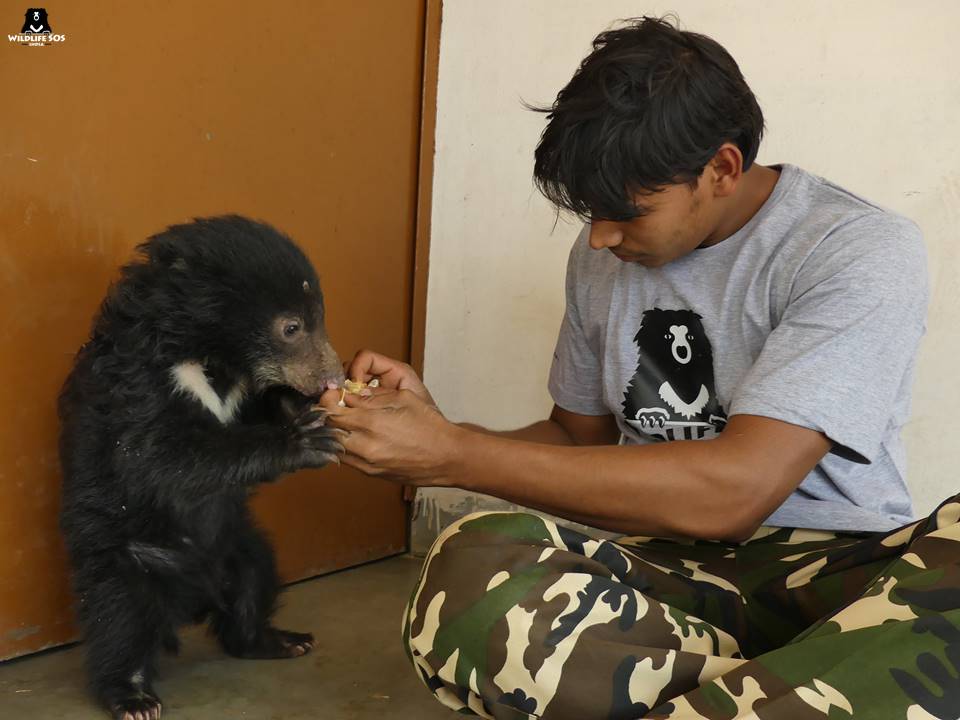- Human-wildlife conflict has been increasing in frequency in the recent years due to people moving closer to forests and animals coming out into cities and villages.
- Working along with the forest department in multiple states, an NGO called Wildlife SOS has been able to rescue wild animals that have strayed into human habitation.
- In addition to animal rescue, the organisation also helps in increasing awareness of people in conflict zones on how to deal with situations when wild animals come visiting.
It was just another day for the farmers of the Koratagere village in the Tumkur district of Karnataka. On the way to their fields, they heard the pitiful cries of an animal in distress. “Imagine our shock, when we found a sloth bear cub entangled in a deadly barbed wire bordering one of our betel nut plantations,” said Chinnappa, a farmer from the village. The prickly wire had got intertwined around its waist as it tried hard to free itself in vain, by gnawing and clawing at it. The black bear was believed to have strayed from the neighboring Thimmalapura State Reserve Forest, about three kilometres away.
In Agra, Uttar Pradesh, finding a golden jackal in their bedroom was the last thing that Subhash Yadav and his family could have expected. “My children found the animal sitting behind a trunk inside the room,” he said. Fearing for their lives, Yadav immediately locked the room to confine the equally panic stricken animal. It was believed to have strayed out from the nearby Taj Nature Walk green belt, which is home to a variety of wildlife species.
Feeling petrified at the sight of a majestic leopard materialising in their sugarcane fields is becoming a reasonably common incident for people in rural Maharashtra. But, farmers from a village in Nashik were in for a different kind of surprise – they came across a frightened litter of three leopard cubs huddled together, concealed in dense sugarcane thickets, mewling helplessly for their mother.
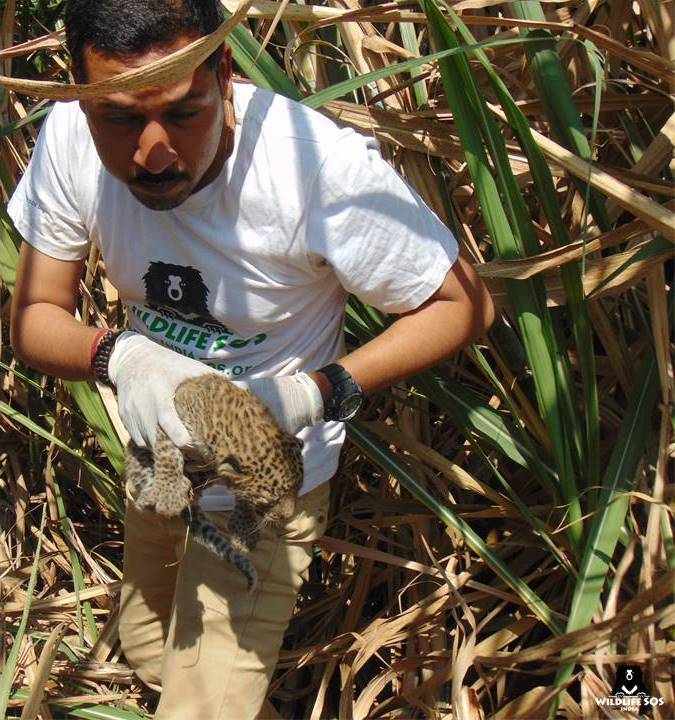
Knocked out of their homes
Such instances of wildlife straying into human habitation are getting increasingly common in Indian cities, villages and other habitations. It is no longer surprising to find animals such as the nilgai, hyenas, palm civets, sambhar deer; large snakes such as pythons and cobras; rare endangered birds such as the Egyptian vultures; and other ‘wild’ species wandering into habitations and thereby escalating human-animal conflicts.
“These incidents of increased straying of wildlife to human landscapes are largely due to rapid urbanisation, human encroachments in wildlife habitats, shrinking forests, depleting prey base, diversion of water sources for irrigation and dams, and improper garbage disposal in cities,” said Kartick Satyanarayan, co-founder and chief executive officer of Wildlife SOS, a conservation nonprofit that has been using multiple strategies to help both animals and the people who come in contact with them avoid confrontation and conflict.
In such situations, apart from just salvaging the distressed animal, it is equally important to sensitise the people who come in contact with the animals, and increase awareness about solutions to conflict, added Satyanarayan.
Accordingly, Wildlife SOS organizes awareness programmes through exhibitions, stalls and interactive sessions for the layperson, besides holding workshops with officials from the departments of law, forest, enforcement and customs. The efforts show up in the rescued figures as well. “On an average between 2012 and 2017, we have rescued around 1700 wild animals belonging to above 70 species every year, from across the country,” said Kadambari Atri, head of communications.
A rather large cat in a sugarcane field
Each rescue operation made by the organization is an exercise in itself. For instance, the reunion of three leopard cubs with their mother in the sugarcane fields of Brahmanwada village in Nashik district of Maharashtra, could not have been more satisfying both for wildlife lovers and the rescuers.
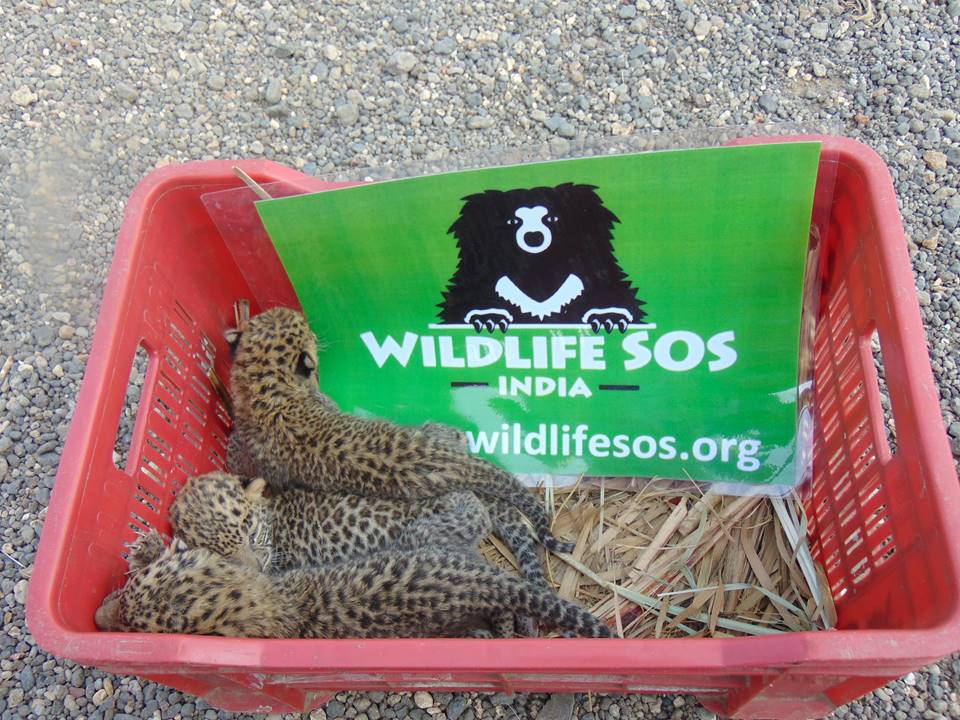
After the farmers spotted the three newborn cubs lost in the fields of sugarcane in November 2017, they called the forest department for help. Sanjay Bhandari, forest range officer at Yeola responded to the call. “The mother leopard had earlier killed cattle in the village and was stalking the area. The villagers were already scared and they insisted that we remove the cubs from there,” he recalled. But it took a lot of convincing by the forest personnel to make the villagers understand that the situation would only get worse if the cubs were removed, as they would incur the wrath of the mother leopard.
Bhandari reached out to Wildlife SOS at its Manikdoh Leopard Rescue Center in Junnar, about 150 kilometres away from the village. The centre is run jointly with the Maharashtra Forest Department. A rescue team headed by the senior veterinarian Ajay Deshmukh rushed to the spot and after a quick assessment of the situation the cubs were carefully placed in a safe box and covered by a tomato crate.
Next, the team installed a remote controlled camera trap to document the movement of the mother leopard, while monitoring the area from a distance. After a long wait of several hours, the mother was spotted emerging cautiously from the nearby forest. She went to the box, lifted the crate and on finding her cubs licked them in delight. She came for two successive days and carried them away carefully into the wilderness, holding them by the scruff of their necks with her mouth.
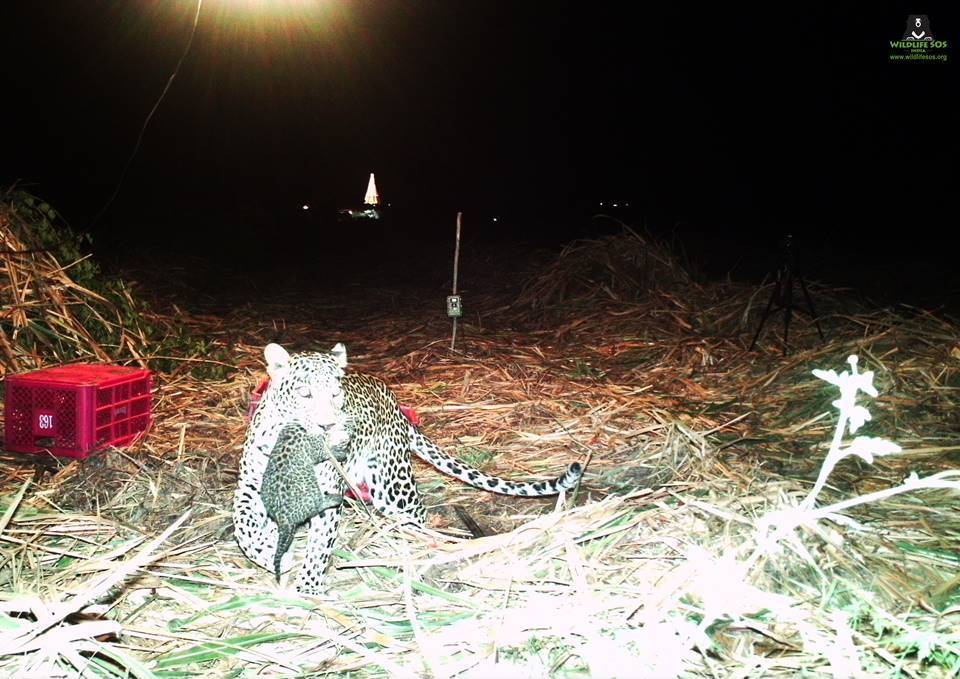
According to Deshmukh, the centre has so far united 40 leopard cubs with their mothers since 2009. According to him, the mantra for such happy and safe reunions lies in leaving the cubs in exactly the same place where their mother left them. Further, just one person wearing gloves should handle them and unnecessary crowding around the stressed cubs should be avoided.
Fine leopard habitat
According to R.M. Ramanujam, divisional forest officer, East Nashik Division, fields of tall and sturdy sugarcane plants, complete with the availability of irrigation water, are turning out to be good leopard habitats. The long leafy plants provide a safe refuge for them, especially for giving birth and rearing their cubs. It is common for female leopards to hide their young ones in these fields while they are away for hunting during the day. However, the cubs are often discovered by the farmers during crop harvest, he said.
“But instead of panicking, stoning the animal, shouting and crowding around it, just keep away from the site and inform the forest department to take charge. Remember in such situations, animals mostly attack in self-defense fearing for their life,” he said.
An unintentional trap
If the “sugarcane forests” are becoming habitations for straying wildlife, open wells in villages close to jungles are deadly traps for them. In December 2017, a team of Wildlife SOS had to rush to Pinahat village in the outskirts of Agra city, on hearing that two hyenas had fallen into a dry well, 25-foot deep. Forest department officials and SOS rescuers lowered two trap cages into the well, one after the other.

After a three-hour marathon rescue operation, the two adult males were brought out of the well. They were later examined at the centre’s animal hospital. According to S. Ilayaraja, the senior veterinarian and surgeon from the centre, one of the hyenas had an injured jawbone, while the other sustained minor cuts and bruises. After a few days of care and treatment, they were released in the wild.
Pinarhat is located close to the Chambal forest range that harbours rare wildlife species such as the striped hyenas, mugger crocodiles, and the gharial, besides several turtle species. “Incidents of animals falling into wells and getting fatally injured or even killed are increasing in recent years,” said Ilayaraja. According to him, either covering them up or putting up fences around them could avoid these.
To spread the message, the organisation has launched a public petition to draw the attention of authorities to the issue. A little care can save the lives of both animals and humans.
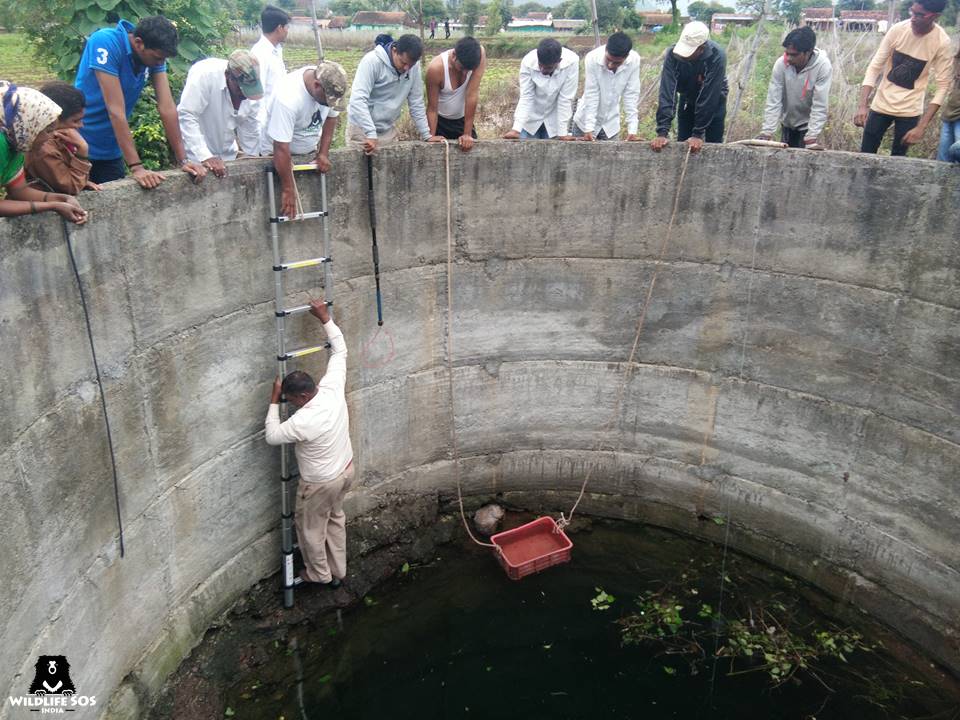
Banner image: A rescued baby bear being fed at WSOS centre in Agra. Photo from Wildlife SOS.
